Biblical definition of hell
“Hell” is the place where those who reject the Lordship of Jesus Christ will experience the wrath and justice of God for all of eternity. Theologian Wayne Grudem defined “Hell” as “…a place of eternal conscious punishment for the wicked.[1]” It is mentioned many times throughout the scriptures. 17th Century Puritan, Christopher Love stated that,
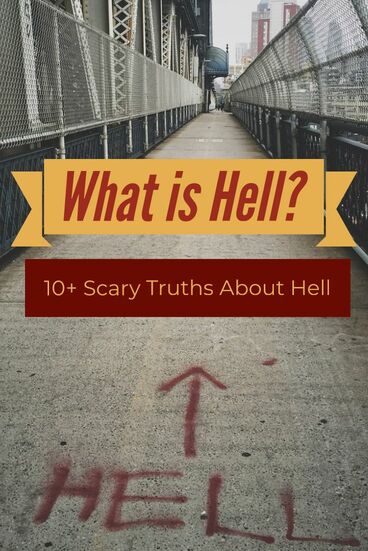
Hell is a place of torment, ordained by God for Devils and reprobate sinners, wherein by His justice He confines them to everlasting punishment; tormenting them both in Body and Soul, being deprived of God’s favor, objects of His wrath, under which they must lie to all eternity.[2]
“Hell” is a Christian belief and teaching that many would like to avoid or forget altogether. It is a harsh and terrifying truth that awaits those who will not respond to the Gospel. Theologian R.C Sproul writes, “There is no biblical concept more grim or terror-invoking than the idea of hell. It is so unpopular with us that few would give credence to it at all except that it comes to us from the teaching of Christ himself.[3]” J.I. Packer also writes, “New Testament teaching about hell is meant to appall us and strike us dumb with horror, assuring us that, as heaven will be better than we could dream, so hell will be worse than we can conceive.[4]” Now a question may be asked, what do the Scriptures teach about “hell?”
“Sheol”: Place of the Dead in the Old Testament
In the Old Testament “hell” is not specifically mentioned in name, but the word used in reference to the after life is “Sheol,” which is used to refer to the dwelling place of people after death.[5] In the Old Testament, “Sheol” is not just for the wicked, but it is also for those who lived righteously.[6] Post-canonical Jewish writings, penned between the close of the Old Testament and the beginning of the New Testament, did make distinctions in “Sheol” for the wicked and the righteous.[7] The account of the rich man and Lazarus in Luke 16:19-31 supports this view. Psalm 9:17 states that, “The wicked shall return to Sheol, all the nations that forget God.” Psalms 55:15b states, “ 15b…let them go down to Sheol alive; for evil is in their dwelling place and in their heart.” In both of these passages it is a place for the wicked, the ones in whom evil dwells in their hearts.. So in light of this, what is an accurate description of “Sheol” for the wicked? Job 10:21b-22 states that it is “21b…the land of darkness and deep shadow 22the land of gloom like thick darkness, like deep shadow without any order, where light is as thick darkness.” Job 17:6b states that it has bars. Psalms 88:6b-7 states that it is“6b…in the regions dark and deep, 7 Your wrath lies heavy upon me, and you overwhelm me with all your waves. Selah.”

So based on these passages in Job and Psalms the description of “Sheol” is that it is a place that is deep, covered in darkness, chaos, a prison, and where God’s wrath is experienced. In the New Testament, “Sheol” is mentioned in Luke 16:19-31.
The description in this passage is that it is a place of torment (16:23a & 16:28b) anguish (16:24b & 16:25b) and flame (16:23b). After an examination of the Old Testament, one can see that Sheol was a place of suffering for the wicked.
Hell in the New Testament
In the New Testament, hell is described both clearly and vividly. There are three words used in the Greek for hell; “Gehenna,” “ Hades,” “ Tartaros,[8]” and “pyr.” Greek Scholar William D. Mounce, states that “gehenna comes about later as a translation from Hebrew and Aramaic phrase referring to a desecrated valley south of Jerusalem. In New Testament usage it refers to an eternal, fiery abyss of punishment where both body and soul are judged[9]” The Lexham Bible Dictionary states,
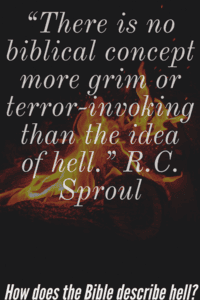
It is a noun derived from the Hebrew phrase gy’ hnwm, which means “Valley of Hinnom.” The Valley of Hinnom was a ravine along the southern slope of Jerusalem. In Old Testament times, it was a place used for offering sacrifices to foreign gods. Eventually, the site was used to burn refuse. When the Jews discussed punishment in the afterlife, they employed the image of this smoldering waste dump.[10]
Mounce also explains the Greek word “Hades.” He states that, “It is conceived as an underground prison with locked gates to which Christ holds the key. Hades is a temporary place that will give up its dead at the general resurrection.[11]” “Tartaros” is the another word used in Greek for Hell. The Lexham Theological Workbook states, “In classical Greek, this verb describes the act of holding a prisoner in Tartarus, the level of Hades where the wicked are punished.[12]” Mounce also explains the word “pyr.” He states, “For the most part, this kind of fire appears in the New Testament as a means used by God to execute judgment.[13]”
What is hell like in the Bible?
In the Gospels, Jesus spoke of hell more then he did of heaven.[14] In the Gospel of Matthew, hell is mentioned 7 times and Hades is mentioned 2 times, along with 8 descriptive terms concerning fire. Out of all the Gospels, Matthew speaks of hell the most, and out of the entirety of New Testament writings, Matthew contains the most content on hell, with Revelation falling in second. In Matthew 3:10, John the Baptist teaches that those who do not bear fruit will be cast into the fire. Scholar William Hendriksen writes, The “fire” into which the unfruitful trees are cast is evidently a symbol of the final outpouring of God’s wrath upon the wicked…The fire is unquenchable. The point is not merely that there is always a fire burning in Gehenna but that God burns the wicked with unquenchable fire, the fire that has been prepared for them as well as for the devil and his angels.[15]

He also explains in Matthew 3:12 that the coming Messiah, Jesus Christ, will come again and that He will separate wheat (the righteous), from the chaff (the wicked), which will be burned by an unquenchable fire. Hendriksen also writes,
So the wicked, having been separated from the good, will be cast into hell, the place of unquenchable fire. Their punishment is unending. The point is not merely that there is always a fire burning in Gehenna but that the wicked are burned with unquenchable fire, the fire that has been prepared for them as well as for the devil and his angels. Their worm never dies. Their shame is everlasting. So are their bonds. They will be tormented with fire and brimstone…and the smoke of their torment ascend forever and ever, so that they have no rest day or night.[16]
In Matthew 5:22 when Jesus teaches on anger, the first reference of hell is made. Jesus explains that those who “…says, ‘you fool!’ will be liable to the hell of fire.” In Matthew 5:29-30, when Jesus teaches on lust, He explains that it is better for a person to lose a body part then for one’s whole body be cast into hell. In Matthew 7:19, Jesus teaches, as John the Baptist did in 3:10, that those who do not bear fruit will be thrown into the fire.
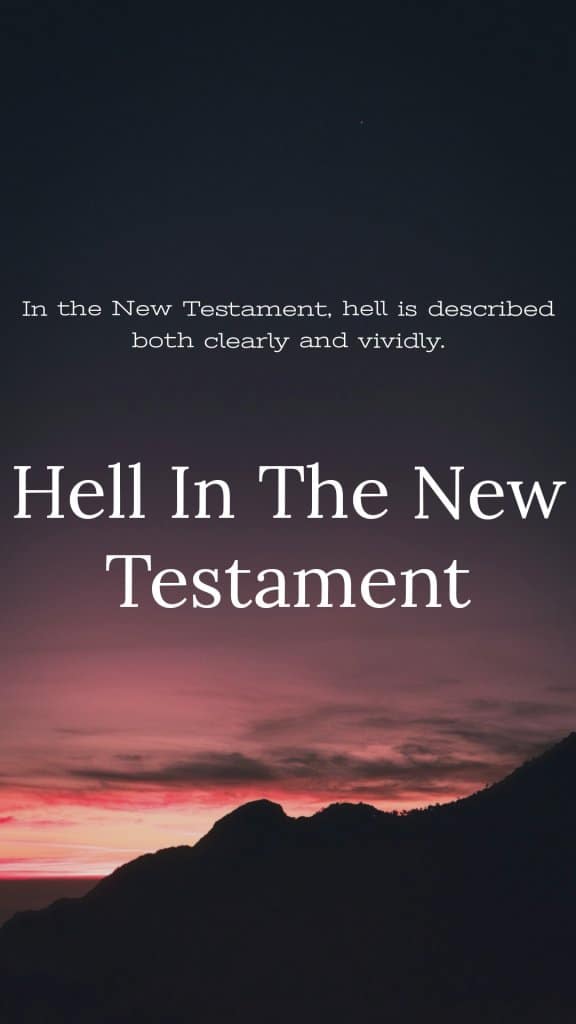
In Matthew 10:28, Jesus explains that a person is to fear the one who can destroy the body and the soul in hell. New Testament Scholar Craig L. Blomberg explains that destroy means eternal suffering.[17] In Matthew 11:23 Jesus says that Capernaum will be brought down to hades for their unbelief.
New Testament Scholar Knox Chamber explains that hades is the place of final judgment for these who do not believe.[18] In Matthew 13:40-42 Jesus explains that at the end of the age all sinners and law-breakers will be gathered together and thrown into the fiery furnace, a place of weeping and gnashing of teeth.
How does The Bible describe hell?
Pastor John MacArthur writes, Fire causes the greatest pain known to man, and the furnace of fire into which the sinners are cast represents the excruciating torment of hell, which is the destiny of every unbeliever. This fire of hell is unquenchable, eternal and is pictured as a great “lake of fire which burns with brimstone.” The punishment is so fearsome that in that place there shall be weeping and gnashing of teeth.[19]
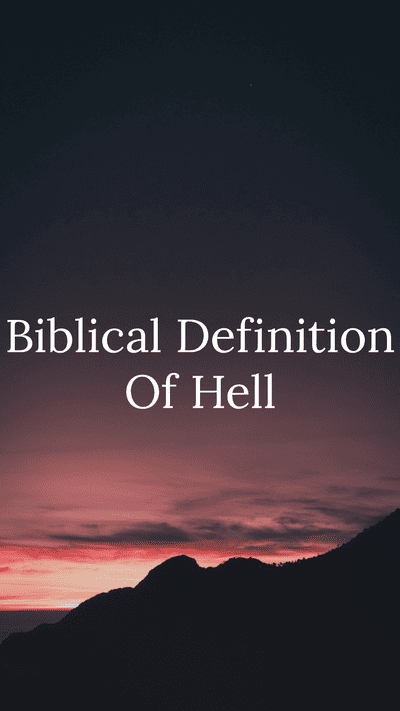
Jesus also says the same thing in Matthew 13:50. Hendriksen expounds on the weeping and gnashing of teeth, along with 13:42, in light of Matthew 8:12. He writes,
As to weeping…The tears which Jesus speaks here in Matt. 8:12 are those of inconsolable, never-ending wretchedness, and utter, everlasting hopelessness. The accompanying grinding or gnashing of teeth denotes excruciating pain and frenzied anger. This grinding of teeth, too, will never come to an end or cease.[20]
The unquenchable fire of hell
In Matthew 18:8-9 Jesus teaches on temptations to sin and that it better for a person to go without the limbs that allow them to give into sin, then for their whole body to be cast into hell. And in Matthew 25:41-46 the unrighteous will depart from God into eternal fire prepared for the Devil and his angels for eternal punishment. In conclusion, in The Gospel of Matthew, hell is described as the place of fire, which is unquenchable, containing suffering, weeping and gnashing of teeth. Those who will inhabit hell are the devil and his angels. Also, all those who do not bear fruit because of their unbelief, those guilty of murder and lust in their hearts and those who do not believe and trust in the Lord Jesus Christ. They are the ones guilty of the sins of omission and commission.

In the Gospel of Mark, hell is mentioned Mark 9:45-49. Jesus is teaching again on how it is better to lose a limb then for one’s whole body to be cast into hell, as seen in Matthew 5:29-30 and 18:8-9. But where it differs is in verse 48, where Jesus says that hell is the place where the worm never dies and the fire is not quenched. Hendriksen explains that, “The torment, accordingly, will be both external, the fire; and internal, the worm. Moreover, it will never end.[21]” He also writes,
When Scripture speaks of unquenchable fire, the point is not merely that there will always be a fire burning in Gehenna, but that the wicked will have to endure that torment forever. They will always be objects of God’s wrath, never His love. Thus also their worm never dies, and their shame is everlasting. So are their bonds. “They will be tormented with fire and brimstone…and the smoke of their torment ascends forever and ever, so that they have no rest day or night.[22]”
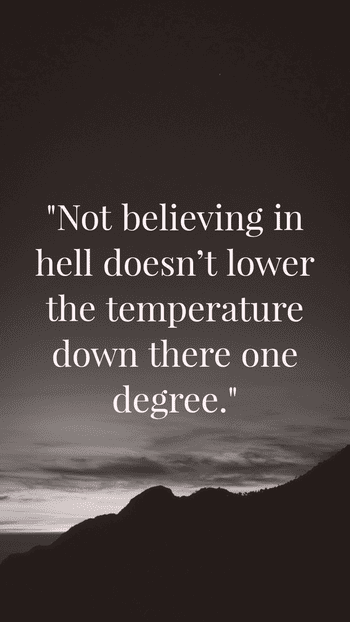
New Testament Scholar James A. Brooks explains that the “worms” and “fire “are symbolic of destruction.[23] Therefore, in the Gospel of Mark, hell is also described as the place where those who do not repent of sin are cast into its unquenchable flames, where their destruction is for all of eternity.
The Gospel of Luke mentions hell in Luke 3:9, 3:17, 10:15 and 16:23. Luke 3:9 and 3:17 are the same account found in Matthew 3:10 and 3:12. Luke 10:15 is the same as Matthew 11:23. But Luke 16:23 is part of the passage on the rich man and Lazarus, Luke 16:19-31, which was mentioned in the explanation of “Sheol.” We must remember that the description in this passage is that it is a place of torment (16:23a & 16:28b) anguish (16:24b & 16:25b) and flame (16:23b). Scholar Robert H. Stein explains that the reference of the rich man’s torment shows that those who dwell there are “…continuing in a terrible conscious and irreversible condition after death.[24]” He explains that fire is “…frequently associated with the final destiny of the unrighteous[25]” So, the Gospel of Luke describes hell as a place fire, that is unquenchable, torment and agony. Those who will dwell there are those who do not bear fruit and are guilty of unbelief.
The Gospel of John has only one reference to hell. In John 15:6 Jesus explains that those who do not abide in Jesus Christ are thrown away like a dead branch and will wither. Those branches are gathered and thrown in the fire where they burn. Hendriksen explains that those who do not abide have rejected the Light, the Lord Jesus Christ.[26] New Testament Scholar D.A. Carson explains that the fire symbolizes judgment.[27] So in the Gospel of John, hell is described as the place where those who reject Christ are thrown in the fire to be burned.

In the letter to the Hebrews the author references hell in Hebrews 10:27. Those who continue in sinning deliberately no longer have a sacrifice for sin,[28] but they wait for a fearful judgment and a fire that will consume the enemies of God. Hendriksen writes,
The emphasis falls on the adjective fearful. The word occurs three times in the New Testament, all in this epistle. This adjective is translated “fearful,” “dreadful,” and “terrifying.” In all three instances its use pertains to meeting God. The sinner cannot escape God’s judgment and, unless he has been forgiven in Christ, faces an angry God on that dreadful day.[29]
He also writes,
“Not only the judgment awaits the sinner who will receive the verdict, but also the execution of that verdict. The author vividly portrays the execution as a raging fire that will consume all those who have chosen to be enemies of God.”[30]
The letter of Hebrews tells us that hell is described as the place where those who reject Jesus Christ by not choosing him as their sacrifice, will experience a terrifying judgment from God and they will be consumed by fire.
In the second letter of Peter, Peter writes concerning false prophets and false teachers. In second Peter 2:4 he explains how God punished fallen angels. He cast the fallen angels into hell when they sinned, and he committed them to chains of gloomy darkness until the judgment. The interesting thing about this passage is that the word used for “Hell” in the original Greek is “Tartaros,” and this is the only time this word is used in the New Testament. This term is a Greek term that Peter was using in order for his Gentile readers to understand hell.[31] So in the second letter of Peter, hell is described as the place where the fallen angels are cast into for their sin and where chains of gloomy darkness hold them until judgment.
In the letter of Jude, the punishment of hell is mentioned twice, only once in the sense of punishment. In Jude 1:7, Jude explains that whoever do not believe, will undergo a punishment of fire with the angels who rebelled. New Testament scholar Thomas R. Schreiner states,
Jude characterized the punishment endured as eternal fire. This fire functions as an example because it is a type or anticipation of what is to come for all those who reject God. The destruction of Sodom and Gomorrah is not merely a historical curiosity; it functions typology as a prophecy of what is in store for the rebellious. The narrative stresses the devastation of the Lord raining fire and brimstone upon the cities. The brimstone, salt and wasted nature of the land function as a warning for Israel and the church elsewhere in the Scriptures.[32]
So, in the book of Jude, hell is described as the place where unbelievers and rebellious angels will experience a more extreme fire, and devastation, than Sodom and Gomorrah experienced.
In the book of Revelation, John is given a vision of the punishment that awaits at the end of days. Revelation is the second book that makes mention of hell the most. In Revelation 14:9-1, those who worshiped the beast and received his mark will drink the wrath of God, poured in his full strength in the cup of his anger; to be tormented with fire and sulfur. The smoke of this torment will last for all eternity and they will have no rest. New Testament Scholar Robert H. Mounce writes, “The punishment of the damned is not a temporary measure. The smoke of their torment rises forever and ever. Without hope of acquittal, they pay the eternal price of having chosen evil over righteousness.[33]” In Revelation 19:20 the beast and the false prophet are thrown alive into the lake of fire. Mounce states,
In our passage the fiery lake is said to burn with sulfur, a yellow substances that burns readily in air. It is found in a natural state in volcanic areas such as the valley of the Dead Sea. A like of burning sulfur would not only be intensely hot, but malodorous and fetid as well. It is an appropriate place for all that is sinful and wicked in the world. The Antichrist and the false prophet are its first inhabitants.[34]
In Revelation 20:10, the devil is also thrown in the same lake of fire as the beast and the false prophet, where they are tormented day and night, forever. In Revelation 20:13-14 Death, Hades and those whose name are not written in the book of life are thrown into the lake of fire, which is the second death. And in Revelation 21:8 the cowardly, the faithless, the detestable, murderers, the sexual immoral, sorcerers, idolaters and all liars their portion will be in the lake of fire that burns with sulfur, which is the second death.
So, in the Book of Revelation, hell is described as a place where those who are the enemies of God will experience the full wrath of God in the lake of fire, for all of eternity.
Conclusion
If we believe the Word of God to indeed be inerrant, we must consider the warning and danger of hell. It is a harsh reality echoed throughout the pages of Scripture and only reserved for the devil, his servants and for those who reject the authority of Christ. As believers, we must do everything in our power to reach the world around with us the Gospel and save others from experiencing the fiery, righteous judgment of God without Christ.
Bibliography
Mounce, William D., Smith, Matthew D., Van Pelt, Miles V. 2006. Mounce’s Complete Expository Dictionary of Old & New Testament Words. Grand Rapids, Michigan: Zondervan.
MacArthur, John F. 1987. The MacArthur New Testament Commentary: Matthew 8-15. Chicago: The Moody Bible Institute.
Hendriksen, William. 1973. New Testament Commentary: Exposition of the Gospel According to Matthew. Michigan: Baker Book House.
Blomberg, Craig L. 1992. The New American Commentary, An Exegetical and Theological Exposition of the Holy Scripture: Volume 22, Matthew. Nashville: B & H Publishing Group.
Chamblin, J. Knox. 2010. Matthew, A Mentor Commentary Volume 1: Chapters 1 – 13. Great Britain: Christian Focus Publications.
Hendriksen, William. 1975. New Testament Commentary: Exposition of the Gospel According to Mark. Michigan: Baker Book House.
Brooks, James A. 1991. The New American Commentary, An Exegetical and Theological Exposition of the Holy Scripture: Volume 23, Mark. Nashville: B & H Publishing Group.
Hendriksen, William. 1953. New Testament Commentary: Exposition of the Gospel According to John. Michigan: Baker Book House.
Carson, D. A. 1991. The Gospel According to John. U.K.: APPOLOS.
Schreiner, Thomas R. 2003. The New American Commentary, An Exegetical and Theological Exposition of the Holy Scripture: Volume 37, 1, 2 Peter, Jude. Nashville: B & H Publishing Group.
Mounce, Robert H. 1997. The Book of Revelation, Revised. Michigan: Wm. B. Eerdmans Publishing Co.
Packer, J. I. 1993. Concise Theology: A Guide to Historic Christian Beliefs. Illinois: Tyndale House Publishers, Inc.
Sproul, R. C. 1992. Essential Truths of the Christian Faith. Illinois: Tyndale House Publishers, Inc.
Beeke, Joel R., Jones, Mark. 2012. A Puritan Theology. Michigan: Reformation Heritage Books.
Grudem, Wayne. 1994. Systematic Theology: An Introduction to Biblical Doctrine. Michigan: Zondervan.
[1] Wayne Grudem Systematic Theology, page 1149
[2] Joel R. Beeke and Mark Jones A Puritan Theology page 833.
[3] R.C. Sproul, Essential Truths of the Christian Faith Page 295
[4] J.I. Packer Concise Theology: A Guide To Historical Christian Beleifs page 262
[5] Seal, D. (2016). Hell. In J. D. Barry, D. Bomar, D. R. Brown, R. Klippenstein, D. Mangum, C. Sinclair Wolcott, … W. Widder (Eds.), The Lexham Bible Dictionary. Bellingham, WA: Lexham Press.
[6] Powell, R. E. (1988). Hell. In Baker encyclopedia of the Bible (Vol. 1, p. 953). Grand Rapids, MI: Baker Book House.
[7] Ibid., 953
[8] Matt Sick, “What are the verses that mention hell in the New Testament,” carm.org/ March 23, 2019
[9] William D. Mounce Mounce’s Complete Expository Dictionary of Old & New Testament Words, page 331
[10] Seal, D. (2016). Hell. In J. D. Barry, D. Bomar, D. R. Brown, R. Klippenstein, D. Mangum, C. Sinclair Wolcott, … W. Widder (Eds.), The Lexham Bible Dictionary. Bellingham, WA: Lexham Press.
[11] Mounce, page 331
[12] Austin, B. M. (2014). Afterlife. D. Mangum, D. R. Brown, R. Klippenstein, & R. Hurst (Eds.), Lexham Theological Wordbook. Bellingham, WA: Lexham Press.
[13] Mounce, page 253.
[14] Geisler, N. L. (1999). Hell. In Baker encyclopedia of Christian apologetics (p. 310). Grand Rapids, MI: Baker Books.
[15] William Henriksen, New Testament Commentary, Matthew page 206
[16] Ibid, page 211.
[17] Craig Blomberg, New American Commentary, Matthew page 178.
[18] Knox Chamblin, Matthew, A Mentor Commentary Vol. 1 Chapters 1-13, pages 623.
[19] John MacArthur The MacArthur New Testament Commentary, Matthew 8-15 page 379.
[20] Hendriksen, page 398.
[21] Hendricksen New Testament Commentary Mark page 367
[22] Ibid., page 367.
[23] James A. Brooks New American Commentary Mark Page 153
[24] Stein, R. H. (1992). Luke (Vol. 24, p. 424). Nashville: Broadman & Holman Publishers.
[25] Stein, R. H. (1992). Luke (Vol. 24, p. 425). Nashville: Broadman & Holman Publishers.
[26] Hendriksen New Testament Commentary John page 301
[27] D.A. Carson The Pillar New Testament Commentary John page 517
[28] One must be carful when examining this passage because there is a danger in believing that one can loose their salvation, which is not inline with the overall teaching of scripture.
[29] Hendriksen New Testament Commentary Thessalonians, the Pastorals, and Hebrews page 294
[30] Ibid., page 294
[31] Lenski, R. C. H. (1966). The interpretation of the epistles of St. Peter, St. John and St. Jude (p. 310). Minneapolis, MN: Augsburg Publishing House.
[32] Thomas R. Schreiner New American Commentary 1, 2 Peter, Jude Page 453
[33] Robert H. Mounce The New International Commentary On The New Testament The Book of Revelation Rev. page 274
[34] Ibid., page 359

Thank you for putting this article together. I believe the topic of Hell has been avoided by the “Modern Church” to try to drawn a picture of an unbiblical “god’ who is just love, love, love and not a Righteous God who really hate evil and loves human and want all to come to the knowlege of Christ. If He is righteous he must make Hell available to all who do not, “follow the Lamb where ever He goes and love not their lives until death.” No one will be forced to lay down their will for him, it must be a choice or it is not real love. Self-love is the road to Hell, paved by the most beautiful creature ever created by God, “Lucifer”. It was his own beauty that brought him down and made hIm the ultimate fool for all eternity. There is a way seems right to a man, which man, every man but it only leads to death. The only man that can be trusted in the resurrected One, who is Jesus the carpenter of Nazareth! David Howell